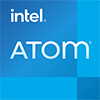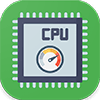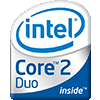
Intel Celeron 430 Benchmark, Test and specs
Last updated:
The Intel Celeron 430 has 1 cores with 1 threads and is based on the 1. gen of the Intel Celeron series. The processor uses a mainboard with the LGA 775 socket and was released in Q2/2007. The Intel Celeron 430 scores 225 points in the Geekbench 5 single-core benchmark. In the Geekbench 5 multi-core benchmark, the result is 225 points.

| Name: | Intel Celeron 430 |
|---|---|
| Family: | Intel Celeron (165) |
| CPU group: | Intel Celeron 400 (4) |
| Architecture: | Conroe (Core) |
| Segment: | Desktop / Server |
| Generation: | 1 |
| Predecessor: | -- |
| Successor: | -- |
CPU Cores and Base Frequency
The Intel Celeron 430 has 1 CPU cores and can calculate 1 threads in parallel. The clock frequency of the Intel Celeron 430 is 1.80 GHz. The number of CPU cores greatly affects the speed of the processor and is an important performance indicator.
| CPU Cores / Threads: | 1 / 1 |
|---|---|
| Core architecture: | normal |
| Cores: | 1x Core |
| Hyperthreading / SMT: | No |
|---|---|
| Overclocking: | No |
| Frequency: | 1.80 GHz |
| Turbo Frequency (1 Core): | -- |
| Turbo Frequency (1 Cores): | -- |
Memory & PCIeThe processor can use up to 16 GB memory in 2 (Dual Channel) memory channels. The maximum memory bandwidth is 17.1 GB/s. The memory type as well as the amount of memory can greatly affect the speed of the system. |
|
| Memory type: | Memory bandwidth: |
|---|---|
| DDR3-1066 DDR2-800 | 17.1 GB/s 12.8 GB/s |
| Max. Memory: | 16 GB |
| Memory channels: | 2 (Dual Channel) |
| ECC: | No |
| PCIe: | |
| PCIe Bandwidth: | -- |
Thermal ManagementThe thermal design power (TDP for short) of the processor is 35 W. The TDP specifies the necessary cooling solution that is required to cool the processor sufficiently. The TDP usually gives a rough idea of the actual power consumption of the CPU. |
|
|---|---|
| TDP (PL1 / PBP): | 35 W |
| TDP (PL2): | -- |
| TDP up: | -- |
| TDP down: | -- |
| Tjunction max.: | -- |
Technical details
The Intel Celeron 430 is made in 65 nm. The smaller the manufacturing process of a CPU, the more modern and energy-efficient it is. Overall, the processor has 0.50 MB cache. A large cache can greatly speed up the processor's speed in some cases such as games.
| Technology: | 65 nm |
|---|---|
| Chip design: | Monolithic |
| Socket: | LGA 775 |
| L2-Cache: | 0.50 MB |
| L3-Cache: | -- |
| AES-NI: | No |
| Operating systems: | Windows 10, Linux |
| Virtualization: | None |
|---|---|
| Instruction set (ISA): | x86-64 (64 bit) |
| ISA extensions: | MMX, SSE, SSE2, SSE3 |
| Release date: | Q2/2007 |
| Release price: | -- |
| Part Number: | -- |
| Documents: | Technical data sheet |
Rate this processor
Benchmark results

The benchmark results for the Intel Celeron 430 have been carefully checked by us. We only publish benchmark results that have been created by us or that have been submitted by a visitor and then checked by a team member. All results are based on and fullfill our benchmark guidelines.
Screenshots:
Screenshots:
Geekbench 5, 64bit (Single-Core)
Geekbench 5 is a cross plattform benchmark that heavily uses the systems memory. A fast memory will push the result a lot. The single-core test only uses one CPU core, the amount of cores or hyperthreading ability doesn't count.

|
Intel Atom Z3795
4C 4T @ 2.39 GHz |
||

|
Intel Celeron N3010
2C 2T @ 2.24 GHz |
||

|
Intel Pentium E2140
2C 2T @ 1.60 GHz |
||
|
|
Intel Celeron 430
1C 1T @ 1.80 GHz |
||

|
AMD A6-5200
4C 4T @ 2.80 GHz |
||

|
Intel Atom x5-Z8500
4C 4T @ 2.24 GHz |
||

|
Intel Pentium T2330
2C 2T @ 1.60 GHz |
||
Geekbench 5, 64bit (Multi-Core)
Geekbench 5 is a cross plattform benchmark that heavily uses the systems memory. A fast memory will push the result a lot. The multi-core test involves all CPU cores and taks a big advantage of hyperthreading.

|
Qualcomm Snapdragon 210
4C 4T @ 1.10 GHz |
||

|
AMD E1-1200
2C 2T @ 1.40 GHz |
||

|
MediaTek MT6582M
4C 4T @ 1.30 GHz |
||
|
|
Intel Celeron 430
1C 1T @ 1.80 GHz |
||

|
AMD E1-1500
2C 2T @ 1.48 GHz |
||

|
AMD E-450
2C 2T @ 1.65 GHz |
||

|
MediaTek MT6580
4C 4T @ 1.30 GHz |
||
Estimated results for PassMark CPU Mark
Some of the CPUs listed below have been benchmarked by CPU-monkey. However the majority of CPUs have not been tested and the results have been estimated by a CPU-monkey’s secret proprietary formula. As such they do not accurately reflect the actual Passmark CPU mark values and are not endorsed by PassMark Software Pty Ltd.

|
AMD C-30
1C 1T @ 1.20 GHz |
||

|
Intel Atom E3826
2C 2T @ 1.46 GHz |
||

|
AMD G-T52R
1C 1T @ 1.50 GHz |
||
|
|
Intel Celeron 430
1C 1T @ 1.80 GHz |
||

|
Qualcomm Snapdragon 210
4C 4T @ 1.10 GHz |
||

|
AMD GX-210HA
2C 2T @ 1.00 GHz |
||

|
AMD GX-209HA
2C 2T @ 1.00 GHz |
||
Benchmarks
Popular comparisons
back to index












